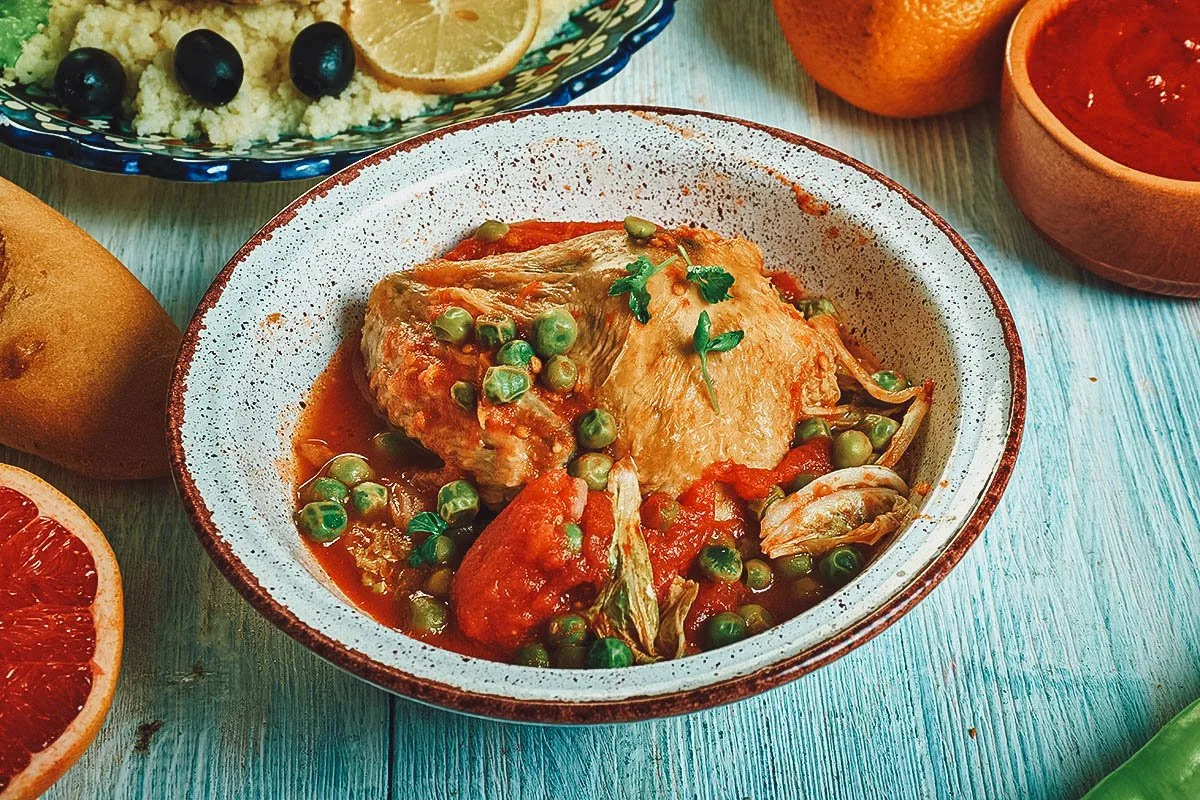If you think of Tunisia, you think of Mediterranean cuisine, typical of coastal areas, but there is a mountain cuisine, characteristic of inland regions and the Djerid Plateau. Simple and genuine ingredients, such as grains, legumes, vegetables, dried fruits, lamb and goat meat, milk and cheese. Spices are used in moderation, compared to the cuisine of low-lying areas, and herbs such as thyme, rosemary, mint, and coriander are favored.

Among the signature dishes we have chorba frik, a thick and nutritious soup made from broken green barley (frik), lamb or beef, mixed vegetables, and spices such as cumin, black pepper, and cinnamon.
It is served hot, accompanied by bread or brik (stuffed pancakes).
Or Marqa, a stew of meat and vegetables, cooked slowly in an earthenware pot called a tagine. The meat may be lamb, goat or chicken, while the vegetables may vary according to season and availability. Among the most commonly used are potatoes, carrots, peas, green beans, and peppers. It is seasoned simply with olive oil, garlic, chili peppers, turmeric and parsley.

Another gem of Tunisian cuisine is a savory pie made of puff pastry filled with ground meat, beaten eggs, grated cheese and parsley. It is baked in the oven until golden brown, served warm or cold, and its name is tajine el bey.
A dessert such as makroudh, prepared with wheat semolina mixed with butter and orange blossom water, is a must. The resulting dough is rolled out and filled with a date paste flavored with cinnamon and sesame. It is then cut into lozenges and fried in boiling oil. Finally, you dip the makroudh in a syrup of honey and orange blossom water.
Gastronomy is definitely an asset for Tunisian tourism to enhance, as it expresses the country's culture, history, and identity. Tunisian mountain cuisine, in particular, can be an attraction for tourists seeking authentic, genuine experiences that are different from those offered by more touristy and commercial areas. Increasingly, it can be a means of promoting the sustainable development of inland regions, fostering the enhancement of local resources, the preservation of traditions and the creation of economic opportunities for rural populations. Today, as more and more discerning tourists and travelers are sought in the creation of experiences, these enhancement projects are increasingly crucial in the creation of itineraries and design of unique trips.
Tunisia's mountains are still little known and frequented by tourists, but there is potential to be tapped to make these places a true asset for tourism around the world.
The beauty and variety of the striking scenery of forests, meadows, lakes, waterfalls, gorges and oases.
The biodiversity of the mountain flora and fauna, home to endemic and protected species such as the Berber leopard and Dorcade gazelle.

Imagine discovering the culture and life of the mountain peoples, who still preserve their traditions, customs and crafts, by visiting the Berber villages of Chenini, Douiret and Matmata, famous for their rock-cut houses, or the Andalusian villages of Testour and Takrouna, characterized by Moorish architecture.
Or imagine attending the magnificent folkloric events, such as the couscous festival in Tabarka or the rose festival in El Kef.
Have you ever thought of exploring the mountains of Tunisia? Would you be curious to try dishes of a less conventional gastronomy than those found in coastal tourist centers?
Share your thoughts and click here for more information.

